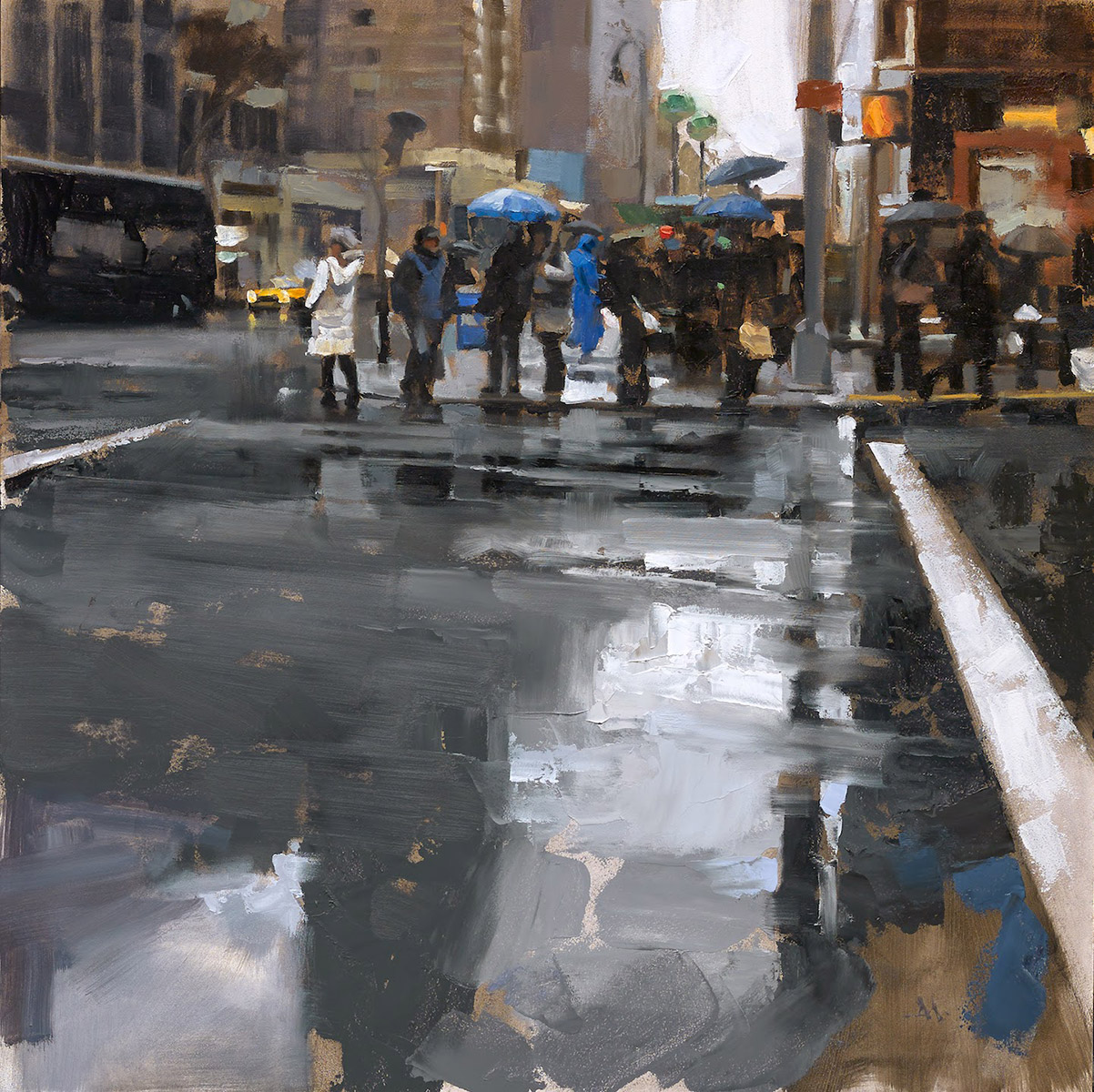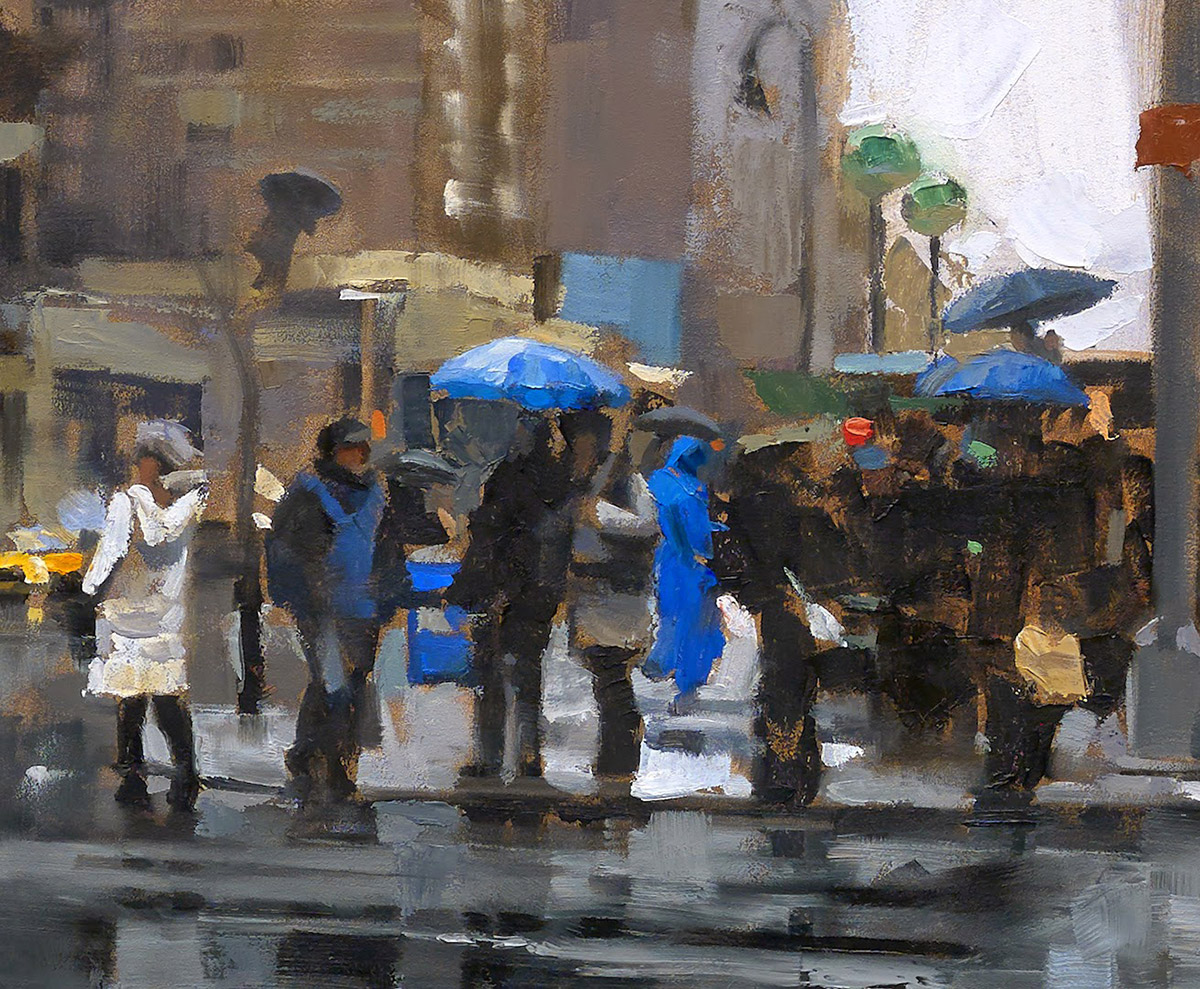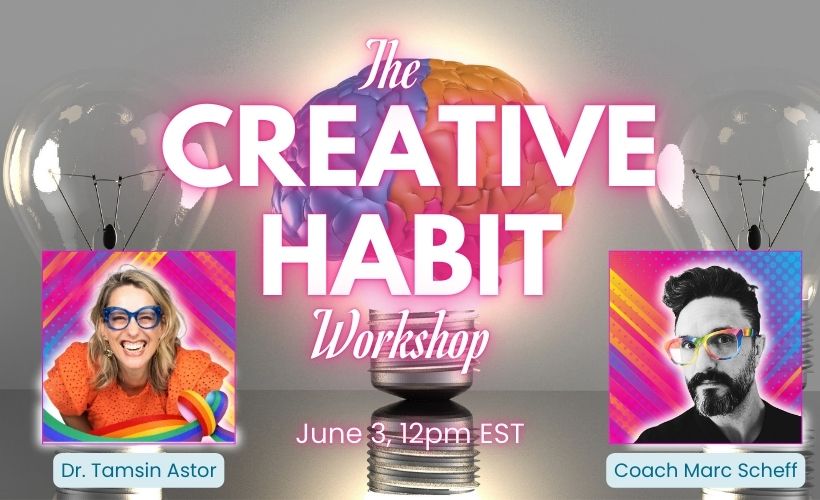Being a successful illustrator is not just about being a good artist. That may be the overarching focus of what you are after, but there are many factors involved that determine a steady, productive career.
We talk about those factors quite a bit here on Muddy, but below are my rock bottom items for flowing into the workplace and becoming a sought-after professional. They may seem simple, and some obvious.
Remember that what you think and say and how you act within this very small industry is a reflection of the business as a whole. In that regard, none of us are alone.
1. Don’t be a jerk.
As if we need more grief in the business. No matter who you are dealing with, whether they can give you work or not, you must not allow yourself to lay a trail of destruction behind you. It catches up.
2. Good handwriting.
We are in the communication business. A good, clean handwriting style is appealing. People melt when they see someone write with a good pen hand. You’ll look intelligent, aware, and capable of dealing with details. Most notably, the details of their assignment.
Notes become pieces of art that art directors tack to their wall. And they remember…
3. Learn to speak and write well.
Master the English language and have a good vocabulary. Don’t use street vernacular when interacting with potential clients, and especially don’t use it when writing email. Only when you’ve worked with a client for a while can you relax your speech.
And if you’re pissed off, do not–repeat, DO NOT–write that email you want to write, even if you are in the right. Better yet, write it and put it in Drafts. Then write the email you know you should.
Proof read. Proof read. Proof read.
4. Learn to articulate your approach.
Speak well, and express yourself clearly when you present your portfolio. To anyone. Like handwriting, or intelligent English, it bolsters you’re effectiveness. Clients will be drawn to you (pun intended) even if they’re not ready for you yet. The next time you call, they’ll be willing to spend time with you.
The old adage that artists are inarticulate about their work is exactly that: old. Don’t be that loser. It is not impressive to any client that you are too ignorant to explain your work. “Gosh, I don’t know…it just comes out. Guess I’m just amazing.”
Don’t let “umm” be your go-to verb.
5. Develop a thick skin.
No matter what anyone says about your portfolio, good or bad, it is opportunity staring you fat, flat, in your face. They might be right, but you must let it roll off your back. Thank them for a compliment and appreciate their cold candor if not.
Either way, you gain insight.
6. Study what’s being bought.
Go to a bookstore, gaming store, go online, watch movies, go to galleries, look at magazines and study what is being bought in the area of illustration that you want to work in. You must. Do not allow yourself to say, “Those are cool, but I want to do something different.” Not yet.
You have to get work first before you can change the world.
7. Have a strategy.
Look at five years out. Build a plan of where you want to have your work five years down the line. Step backwards from that point to apply incremental steps of what you can do to get there; what needs to be in your book. Pace it off. See if you can’t come all the way back to knowing what you can do today to head toward that goal.
8. Stay out of debt.
When you get paid for a big job and you feel on top of the world, do not go out and buy a car. Or a house. Save that money. It will feel so good just to see it sitting in your bank account.
Conventional freelance wisdom says you must build up a buffer to cover yourself for three months starting out. Then six months, then one year. This is your only chance to be able to survive this business without living paycheck to paycheck.
Be patient and build that bank nut. Then you can loosen up.
9. Advertise.
If you must spend that money, then put it back into your business. Use it on advertising. Again, we’re in the communication business. Never skimp on getting your images out there. Consider the costs, certainly, but promotion comes first.
Accolades come after.
10. Play the field.
Set your sites on The Industry, not just one part of it. Don’t be myopic. Think about where you can apply your pictures to work in many sectors of the field.
Separate areas of illustration don’t watch each other. Children’s book folks don’t usually watch what’s happening in advertising or even book cover work. Comic book people generally don’t pay attention to editorial clients.
You can work in multiple areas of the field at one time. This will broaden your abilities and your survival rate.









Oh man, talk about a 1…2…3… punch in the guts! You mean I can't be an illiterate jerk anymore??
Good stuff, as always Greg!
Gracious advice all up and down. In regards to learning to write and speak well; I've found that using a Text-to-Speech application is invaluable when it comes to writing more clearly and with fewer mistakes.
It's really easy to overlook simple errors oftentimes. Especially when you're tired and need sleep. Using a Text-to-Speech app is much like asking someone else to read your writing aloud for you. It makes it so much easier to comprehend your errors. Especially when no one is available to proofread the work. It's the closest thing there is to looking at your work in a mirror in terms of writing.
My personal tool of choice is SpeakIt! for Chrome. Although it's been awhile since I've looked and there may be more robust choices out there these days:
https://chrome.google.com/webstore/detail/speakit/pgeolalilifpodheeocdmbhehgnkkbak?hl=en-US
I've been aware of Text-to-Speech for a long time, like many I'm sure, but it just hit me one day last year that it would make a really useful proofreading tool. I have to admit that it's saved me more than once from facepalming on simple writing mistakes when the midnight oil is depleted.
Nope…can't be that absolute JERK you've been for so very long, Jared. Give it up, pal. : )
Thanks, Tobias! I have a friend that uses a program like that to listen to his manuscripts. He can pick whether it's read by a female English-accented voice, or male. It still has a bit of a robot edge to the sound, but fairly effective.
My only concern is that far too many people write on the web as if they're speaking aloud. Writing is much more nuanced than that. In fact, it's part of the problem. People think they can write because they can speak. But it's quite a delicate endeavor and should be approached that way when communicating to clients. A learned skill. That's why it takes so long for authors to mature.
Still, I like your idea! I bet it only gets better, huh? I could use it! I also want a better program that will take my speech and type them….
A post full of helpful, real-world, first hand advice from a master artist and illustrator, exactly the reason I read “Muddy Colors” every chance I get.
Thank you. Great post.
Great points Greg. Text-to-Speech isn't a catch all solution to many of the difficulties inherent to good written communication. It most certainly can't make you a better writer when it comes to coherence, clarity, and concision.
One aspect of using Text-to-Speech that I failed to mention before is that it can help ensure one doesn't come off sounding like a “jerk” when in doubt. Some circumstances require you to be firm on certain issues without being violative, which can be a difficult subtlety to convey. Hence the importance of nuance, as you mentioned. So when I'm writing something and I say to myself “Do I sound like a jerk?”, at least I have a tool to check against that in some capacity which doesn't have an emotional attachment to the situation at hand. The sound of an impartial robotic voice can be quite detached that way. If it sounds borderline offensive when even a HAL like voice says it, I know I need to change something.
I'm totally with you on Speech-to-Text. It's getting better, but most of my experience has been pretty clunky to date. I'll give it another try in a couple of years maybe.
Cool….let me know if you find something, Tobias! Thanks…
Thanks, Shen! It is -very- first hand. Not only have I experienced these items for all my “10 Things…” but I've watched them work for other professionals. Times change, certainly, but the basic principles are always the foundation, even in today's digital market.
Happy to help….
Laughed hard at number 2. Which is horrible, because I have what some call doctor's handwriting.
Awesome sir. As always your input is fantastic, couldn't be otherwise. I have a dilemma regarding point 6 because it sort of conflicts my thoughts after Dave Palumbo's 'Total Commitment' article from a few months ago.
Dave had suggested an artist commit with confidence to the choices one makes and feels are the most expressive and that work best in the given situation as well as in general, committing to one's voice as it were. At that point in time I was in a dilemma to either keep following my “direction” based on my influences, or adopting the digital painting styles which are preferred commercially. After Dave's article, I decided to keep going the way of my influences.
This is hard because most of the fantasy artists are making digital art that's just weirdly loud, with doubtful point (at least in my view) as pieces beyond their initial purpose. They are also stylistically very specific, using ultra saturated and burnt color, excessive baroque-like designs etc. I understand the purpose, it's just not me at all. I could look at 5-10 tutorials, copy a couple of processes and go for that look, I may even get more and better work faster, but I will be in turmoil and frustration, I am already forcing myself to use a tablet as it is.
My preferences are of the opposite (well, almost) nature to digital art's look. But it's the consequence of being affected mostly by old masters and traditional illustrators, not by concept video game art or comics. Sure I have a long way to go, I can't compete technically, however these strategy choices affect me deeply.
So, to express a question, what if what you want to do isn't all that different in theme, but a little different in voice, tone or even choices of the particulars of the theme (for instance I would never do elves and warhammer stuff…weird I know)? How do you think that affects ones evolution?professionally?
Thanks Greg! Another great addition to (edition of?) the 10 Things… series.
One question for you in all this: You mention advertising, but there are so many options out there. Which do you think is the most effective in this day and age? Do postcards still rule the landscape? Is Showcase even around anymore? (I graduated in 1997, got sucked into web / graphic design, and now am looking to get back into the field… a lot has changed.)
Thanks again for the article, and for any info you may have about this.
Proofread is one word, isn't it?
I know you want Greg to answer this but until he swoops in I thought I'd put in my two cents because it has a lot to do with my history. As an illustrator you will need to make the decision between making a living as an illustrator as soon as possible or waiting for the world to come around to you. Every artist has to be aware of the zeitgeist, the feeling of the times. Things that are working and being bought and if you want to make a living as an illustrator then you better tap in to what's happening. The other side of the coin is patience, which means some alternative way to make a living, to develop your own specific voice directly and wait for things to “catch up” to you. Do you want to bend your voice in the beginning to get work and try to make a living just doing illustration or do you work as a designer or teacher (both of which I did) or something else, picking and choosing markets as they develop or as you develop them? Ultimately it comes down to which end of the industry is your huckleberry. The best scenario is that your voice adds that little extra something to todays zeitgeist so people come looking for you and new horizons open.
Hey Bill!
I'm open to anyone giving a helping word! Also, your art is great. I've seen your stuff before. That's a prime example of a particular style done good, if you know what I mean.
The decision you refer to has been circling my mind. In a way I feel I have less access to better pay because I haven't paid my dues in various parts of the picture-making art, and more particular in practicing in using oils, which is my favorite medium. My timidness to even touch them more often to practice, has caused me to do things digitally, and it's a struggle cause I hate digital “paint”. But Dave's article was a push in the direction I want to go. But it's still frustrating.
I say this because my influences and preference in fantasy art is the view of fantasy art through the mindset of Frazetta, Jeff Jones and all their contemporaries as well as older artists. I cannot abide the Tolkienesque, standardized fantasy landscape of today, with the high saturation, burnt color, a ton of “effects” in there and all contrasted with black, to make an image that couldn't be hung on the wall of a museum. Ambitious? Sure. But hey, it's where I feel pulled towards, I have no choice. I like some of the work digital artists do, but I know that at best I could emulate what mediocre digital artists do, and badly. Not because of lack of understanding or skill, but because I am appalled by the digital medium and the contemporary fantasy “tropes”.
Hi Greg
Can you give me some Details about 9. Advertisement? You mentioned this before in your post about reps/agents. What exactly includes this? You don't count Shows/Exhibitions (e.g. Illuxcon), Artbooks (e.g. Spectrum), Web-Galleries (e.g. Deviantart, Artstation) as such, right?
In Short: Where do ADs (especially Fantasy Illustration ADs) look for ads and Artists?
And did you do that in the past? (if yes, where?)
Thanks in Advance for a response and thanks for the MC-posts in general.
Well there are definitely paths to get where you want to be right now. We never know in our business when a door will close but talking to artists like Greg, Donato, Patrick Jones, Raoule Vitale, and others who are doing that kind of thing right now is probably a good thing. I understand the frustration of not liking the general direction of the times and taking the road less traveled. But things are cyclical and I was patient. Don't be afraid to build your own road just be aware of what it will cost.
Hey Michael,
Ultimately, you are asking a 'this way or that way' question. Perhaps looking for a 'not this, but that' answer. It's ok…it is part of the process of figuring this stuff out. We all ask it at some point. (Yes, even those who are well along the way asked this question of themselves early on. Earlier than the rest of us at the time.)
Most illustrators today must be able to handle digital. It's just the way of the business and learning it is part of the survival instinct now. That doesn't mean it has to be the major determining factor for your paintings. Most of the publishers I know could care less whether a piece is digital or not as long as it's good and solves their problem or needs.
Most students want to know the 'best' way to go about painting, or working, or developing a portfolio, or getting clients. They don't seem to understand that versatility is key. Being able to work in multiple styles, in multiple media strengthens a person's ability to stay afloat in the business. (#6 above…work first, genius later.) It takes much much repetition and work to find the approach that not only works for you, but for clients. It takes training to develop a method that you can use to get work. The development toward a unique voice evolves out of that work, that focus.
I would continue working on your oil painting. It sounds like you love it. That's what happened to me. I discovered I was doing too many styles and neglecting my love for the pigment. Does that sound contradictory to the above? It is. It's because it took all of that work for clients in different techniques to return to my roots, so to speak. But I was working in the business the whole time. I was painting what people wanted, requested, assigned. It took great determination and FOCUS to find my path and it turned out to be right in front of me.
Giving a client what they ask you for is a beautiful thing. Primarily, we are in the business of getting work for the skills we've developed, not for some magic conceptual genius. That comes later, after you've established an ability to work for and with clients in the first place.
Look at what's being bought, and let that guide you. If you don't like it, that's ok, but you'll have to develop an approach that a client can see as useful to them. Much like what Bill said above.
Personally, I look at the work that's being done all the time, but I don't really work that way, or sell that. Do I like it? Much of it, yes. It teaches me a lot about my own work. I'd even like to do some of it for the experience. I'm with you: I'm not crazy about painting orcs and buffed-up fantasy fighters, but I do things that live in the fantasy world without catering to some of the tropes. Though I can still use some of those tropes.
I hope this response will get you a little further along. Frustration is part of the process, too. Discovery does NOT come easily. It's painful. It's no fun. But as you gain confidence you build insight; into your work and the work of others. It compiles. That's why there's no simple answer to your question.
You have to keep asking the questions. It is the only way to real growth. Because once you find the 'solution' if you don't keep asking the next questions, you stagnate.
The biggest decision is not what your destination is, but whether or not you get on the train.
Thanks for asking, and I hope you continue!
To answer a couple questions about advertising…#9
Of course, the business has changed again. Many of the old directories are gone, but there are several left. WorkBook, Directory of Illustration, etc. You can buy pages in there and it keeps your work in front of people who use them.
The internet is tough. Free, but crazy competitive. And how is anyone going to find you? There are billions of websites.
I have always considered the annual shows as ADVERTISING, not as just a place to feel good about being involved in. The Society of Illustrators Annual, Spectrum Fantastic Art Annual, CA Annual, etc….these are fabulous places to have your work seen by loads of potential clients and art directors. They may be hard to get into, but once you do, it is advertising you couldn't possibly afford to buy your way into!
ATTENDING OPENINGS is another way of advertising. GETTING INVOLVED is another way of advertising. Spending time around other artists who spend time around art directors who spend time around account execs who spend time around art buyers who…you get my point. I've watched many young and enthusiastic artists not only get better, but get work by being around as part of the conversation of these people.
Advertising is not just a postcard to the right person. It isn't the full page ad in some newspaper, annual, or billboard. Advertising, for the artist, is the complete picture–by multiplying and applying ALL of these techniques and approaches to coalesce into who you are as an artist.
Thanks for asking about advertising, all! I should've been a little clearer in my post.
I like to keep these 10 Things… to the point, so they're easier to remember, but I'm happy to clarify in the comments!
G
Thank you Greg! Yes, facetime is vital I'm sure. Looks like I'd better consider shows as a big part of the process, if I wasn't before. No sitting at home on the Internet waiting to be discovered ;-).
Having several great artists as friends on Facebook (and Art Directors) is helpful too because I get to see how they present themselves, how often they travel / show, and how they present their work in a social network process. It's fascinating but I'm glad the old ways still thrive! Take care 🙂
Thank you for the extensive answer, it is very very helpful. Lacking an immediate artistic environment or encouragement for what I do from those close to me, all I have to keep me going, is passion, ego, whatever confidence I have in myself at times and any advice I find from here (I don't really follow any other blog/forum anymore). But even confidence has it's ups and downs. And it's good that your list frustrated me, because it made me ask. And I'm glad I did, cause I feel I'm treading the right path still. Thanks for the advice, for the articles and for this boost in confidence.
Fresh bright colours that 'pop'. That's why I love rain paintings, the black against colour. Have you ever seen Clarice Beckett's work? 30s magic.
As a former teacher of business writing and English, I have to say points 3 and 4 are so crucial. Of course there are considerations for folks dealing with English as a second language, but good faith effort to communicate clearly, concisely, and with care goes a long way even then. Visual communication may be a different skillset to verbal art, but careful and mindful handling of one draws an unconscious parallel to how one handles the other. Careless grammar, punctuation, and spelling not only makes it more difficult to communicate clearly with someone, but leaves the impression that artistic problem-solving will be handled carelessly as well.
A tip from a beloved professor that has served me well: the secret to great writing is rewriting.